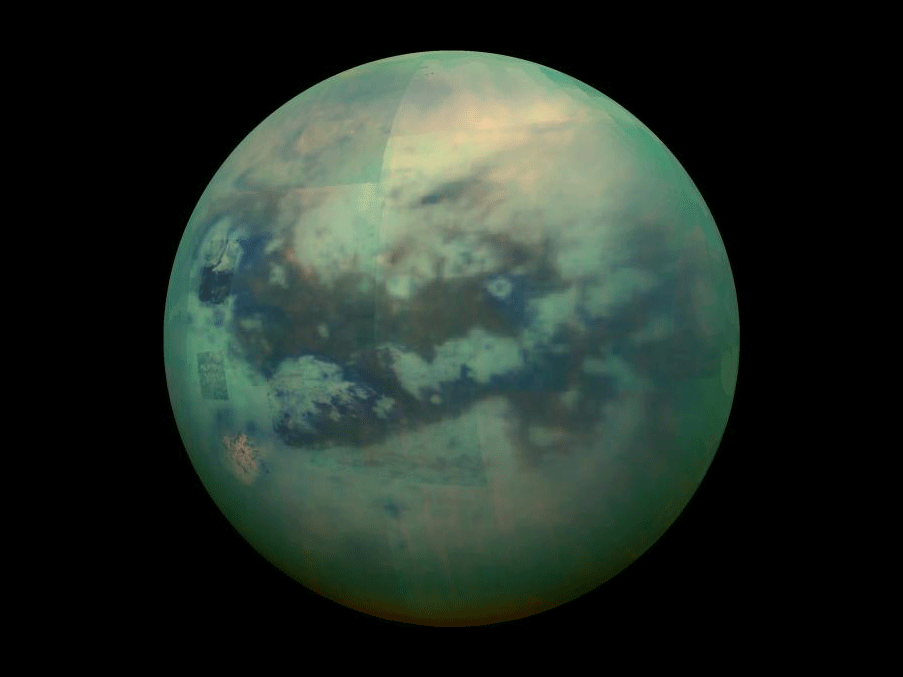Nasa Cassini probe captures Earth-like image of Saturn's biggest moon Titan in distant flyby
The Cassini probe's infrared camera manage to penetrate the moon's hazy atmosphere

Your support helps us to tell the story
From reproductive rights to climate change to Big Tech, The Independent is on the ground when the story is developing. Whether it's investigating the financials of Elon Musk's pro-Trump PAC or producing our latest documentary, 'The A Word', which shines a light on the American women fighting for reproductive rights, we know how important it is to parse out the facts from the messaging.
At such a critical moment in US history, we need reporters on the ground. Your donation allows us to keep sending journalists to speak to both sides of the story.
The Independent is trusted by Americans across the entire political spectrum. And unlike many other quality news outlets, we choose not to lock Americans out of our reporting and analysis with paywalls. We believe quality journalism should be available to everyone, paid for by those who can afford it.
Your support makes all the difference.A new image of Titan released by Nasa shows Saturn's larget moon can bear a striking resemblance to Earth.
The image was taken by Nasa's Cassini probe, which used an infrared camera to observe Titan's surface through its hazy atmosphere.
Typically images of Titan make it appear orange due to the thick haze, but this image manages to capture the lunar surface, which is pitted with lakes of liquid ethane, methane and propane.
During the flyby, the Cassini probe came within 6,200 miles of Titan, much higher than the usualy distance of around 750 miles. This high altitude allowed the spacecraft to capture an image of such a wide area.
The image shows a "late northern spring view", as Nasa puts it, with the sun high in the sky, explaining the lighter surface in Titan's northern hemisphere.
Cassini arrived at Saturn in 2004, after a long journey following its launch in 1997.
It's conducted a number of studies of Saturn and its moons, and was responsible for delivering the lander Huygens on the surface of Titan in 2005 - which remains the most distant landing of any man-made spacecraft in history.
Join our commenting forum
Join thought-provoking conversations, follow other Independent readers and see their replies
Comments